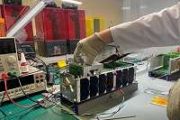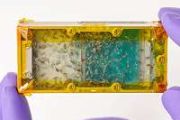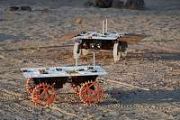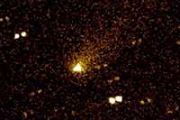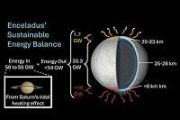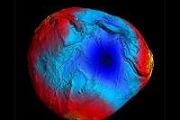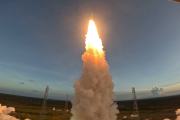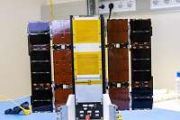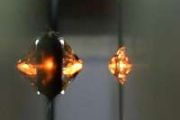
Copernical Team
R&D Days on Propulsion and Flight Vehicles
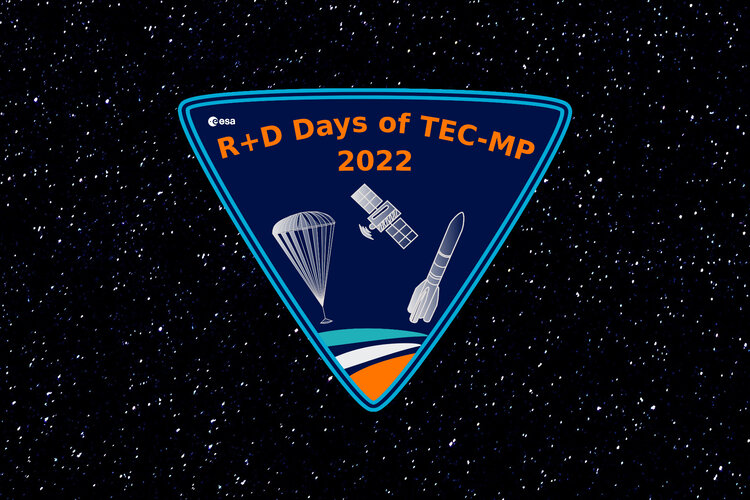
R&D Days on Propulsion and Flight Vehicles
Register for a 22–24 March 2022 ESA webex on current and future propulsion technologies with Q&A
Combing the cosmos: New color catalog aids hunt for life on frozen worlds
 Aided by microbes found in the subarctic conditions of Canada's Hudson Bay, an international team - including researchers from Portugal's Instituto Superior de Agronomia and Tecnico, Canada's Universite Laval in Quebec, and Cornell - has created the first color catalog of icy planet surface signatures to uncover the existence of life in the cosmos.
As ground-based and space telescopes get
Aided by microbes found in the subarctic conditions of Canada's Hudson Bay, an international team - including researchers from Portugal's Instituto Superior de Agronomia and Tecnico, Canada's Universite Laval in Quebec, and Cornell - has created the first color catalog of icy planet surface signatures to uncover the existence of life in the cosmos.
As ground-based and space telescopes get Roman Telescope could help find other Earths by surveying space dust
 A team of scientists found NASA's Nancy Grace Roman Space Telescope will be able to measure a specific kind of space dust littered throughout dozens of nearby planetary systems' habitable zones, or the regions around stars where temperatures are mild enough that liquid water could pool on worlds' surfaces. Finding out how much of this material these systems contain would help astronomers learn m
A team of scientists found NASA's Nancy Grace Roman Space Telescope will be able to measure a specific kind of space dust littered throughout dozens of nearby planetary systems' habitable zones, or the regions around stars where temperatures are mild enough that liquid water could pool on worlds' surfaces. Finding out how much of this material these systems contain would help astronomers learn m Radar studies of ice at Mercury may help Artemis Program
 Despite being the closest planet to the Sun, some craters on Mercury's poles contain ice. The deposits, which were first detected in the early 1990s, were thought to be thick layers of nearly pure water ice. A new study published in the Planetary Science Journal was able to characterize the icy deposits in Mercury's north pole in greater detail and has provided a more robust way of finding and s
Despite being the closest planet to the Sun, some craters on Mercury's poles contain ice. The deposits, which were first detected in the early 1990s, were thought to be thick layers of nearly pure water ice. A new study published in the Planetary Science Journal was able to characterize the icy deposits in Mercury's north pole in greater detail and has provided a more robust way of finding and s Searching for Planet Nine
 The Solar System has eight planets. In 2006, astronomers reclassified Pluto as a dwarf planet, the same class as contains Eris, Sedna, Quaoar, Ceres and perhaps many more solar system small bodies. These are defined approximately as bodies that orbit the Sun but that are not massive enough (unlike regular planets) to gravitationally dominate their environments by clearing away material. Astronom
The Solar System has eight planets. In 2006, astronomers reclassified Pluto as a dwarf planet, the same class as contains Eris, Sedna, Quaoar, Ceres and perhaps many more solar system small bodies. These are defined approximately as bodies that orbit the Sun but that are not massive enough (unlike regular planets) to gravitationally dominate their environments by clearing away material. Astronom Meteorites that helped form Earth may have formed in the outer solar system
 Our Solar System is believed to have formed from a cloud of gas and dust, the so-called solar nebula, which began to condense on itself gravitationally ~ 4.6 billion years ago. As this cloud contracted, it began to spin and shaped itself into a disk revolving about the highest gravity mass at its centre, which would become our Sun.
Our solar system inherited all of its chemical composition
Our Solar System is believed to have formed from a cloud of gas and dust, the so-called solar nebula, which began to condense on itself gravitationally ~ 4.6 billion years ago. As this cloud contracted, it began to spin and shaped itself into a disk revolving about the highest gravity mass at its centre, which would become our Sun.
Our solar system inherited all of its chemical composition A Day in the Life of a T-DOC
 It takes a team to plan Perseverance's daily activities, including people in many different roles. One of these roles is called the tactical documentarian, or T-DOC. The tactical documentarian takes notes of the decisions made throughout the day as the rover's plan changes, and shares those notes with the team so that the next day's planning team knows what happened, and why.
The planning
It takes a team to plan Perseverance's daily activities, including people in many different roles. One of these roles is called the tactical documentarian, or T-DOC. The tactical documentarian takes notes of the decisions made throughout the day as the rover's plan changes, and shares those notes with the team so that the next day's planning team knows what happened, and why.
The planning Sols 3414-3416: Progress!
 Over the weekend, we completed the planned drive with a relatively easy (by "Greenheugh Pediment" standards) traverse in the pediment. With lots of bedrock in the workspace, we quickly identified a contact science target for APXS and MAHLI, "Oosta," that was slightly less dusty than the surrounding bedrock and nicely layered.
We decided not to co-target ChemCam LIBS with the contact scienc
Over the weekend, we completed the planned drive with a relatively easy (by "Greenheugh Pediment" standards) traverse in the pediment. With lots of bedrock in the workspace, we quickly identified a contact science target for APXS and MAHLI, "Oosta," that was slightly less dusty than the surrounding bedrock and nicely layered.
We decided not to co-target ChemCam LIBS with the contact scienc China tests rocket engine for upcoming space lab launches
 A Chinese high-thrust oxyhydrogen rocket engine has completed a 520-second test in preparation for the upcoming launches of space station lab modules, its maker said on Wednesday.
Developed by the China Aerospace Science and Technology Corporation, the engine is designed for the core stage of the Long March-5 carrier rocket series, which will be used to launch two lab modules of China's or
A Chinese high-thrust oxyhydrogen rocket engine has completed a 520-second test in preparation for the upcoming launches of space station lab modules, its maker said on Wednesday.
Developed by the China Aerospace Science and Technology Corporation, the engine is designed for the core stage of the Long March-5 carrier rocket series, which will be used to launch two lab modules of China's or Carrier rocket preparing for its debut flight
 Smart Dragon 3, a new model of solid-propellant carrier rocket, is scheduled to make its debut flight in September, according to a senior rocket scientist.
Engineers at the China Academy of Launch Vehicle Technology, the country's major rocket maker, are building the first Smart Dragon 3, which will be launched for the model's first mission, said Jiang Jie, a senior rocket scientist at the
Smart Dragon 3, a new model of solid-propellant carrier rocket, is scheduled to make its debut flight in September, according to a senior rocket scientist.
Engineers at the China Academy of Launch Vehicle Technology, the country's major rocket maker, are building the first Smart Dragon 3, which will be launched for the model's first mission, said Jiang Jie, a senior rocket scientist at the 
